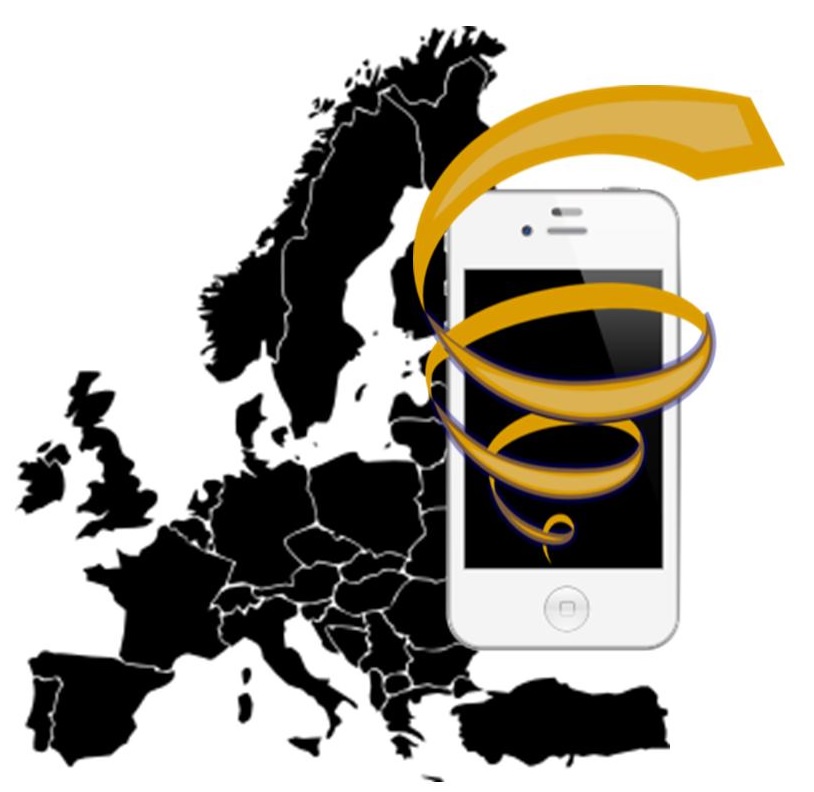The 2016 Digital Payments Study showed a rapidly rising number of consumers using smartphones to pay.
The 2016 Digital Payments Study from Visa revealed insight into European mobile payments trends. It showed that there has been a spike in the number of people using smartphones as wallets. In fact, the number of people using this type of transaction has tripled since 2015.
At the time of the research, 54 percent of consumers were using mobile payments on a regular basis.
The research indicated that European mobile payments were regularly used by over half of consumers. Comparatively, at the same time the year before, only 18 percent of consumers were using mobile wallets to pay for goods and services.
 This research involved the participation of over 36,000 online consumers in Europe. They resided in any of 19 different countries in the continent. The study showed a dramatic shift in the use of mobile payments technology over the prior 12 months.
This research involved the participation of over 36,000 online consumers in Europe. They resided in any of 19 different countries in the continent. The study showed a dramatic shift in the use of mobile payments technology over the prior 12 months.
The European mobile payments research also indicated that more people are open to trying the tech.
Last year at the same time, 38 percent of respondents had never used mobile payments and had no intention of ever trying it. This year’s figure has dropped to 12 percent. Clearly, far more people are interested in trying the use of mobile devices to pay for products and services.
There were two countries in which it was most obvious that there was a very large increase in mobile wallet use and interest. These two countries were Turkey and Romania. They have been adopting this technology at a staggering rate.
That said, the United Kingdom stood out as a market where there was a very large percentage of smartphone users who also used mobile payments. In the U.K., 74 percent of device owners had tried mobile wallets. Over half of the people who had tried the tech (59%) had done so to transfer money to friends and family. Slightly fewer (45 percent) had used it for purchasing take-out at restaurants.
A new trend in European mobile payments has also started to develop. Within it, consumers have revealed that they are increasingly comfortable in using their mobile devices to make more expensive purchases.
An Astound Commerce survey showed that people are shopping on smartphones more than ever.
The results of a new mobile commerce growth rate study have been released by Astound Commerce. The study was based around a survey titled “Mobile Accelerates to the Express Lane.”
The report illustrated the m-commerce sales trend in the United States and where they will reach this year.
The study results indicated that the American Mobile commerce growth rate would bring sales to $130.92 billion by the close of the year. This means that it will make up 33 percent of the overall e-commerce sales completed this year. Moreover, in the prior 12 months, there was a 40 percent year over year increase in discretionary spending in mobile commerce. In e-commerce, that figure was markedly lower, at 11 percent.
The mobile commerce growth rate also impacted other parts of the shopping process aside from purchases.
 The Astound Commerce report indicated that buying was only one component of the mobile commerce journey. People are also using their smartphones to research products. Among the survey respondents, 40 percent said they read their emails and would frequently visit retailer sites at the same time. Moreover, another 40 percent said smarphones make the shopping transaction process faster.
The Astound Commerce report indicated that buying was only one component of the mobile commerce journey. People are also using their smartphones to research products. Among the survey respondents, 40 percent said they read their emails and would frequently visit retailer sites at the same time. Moreover, another 40 percent said smarphones make the shopping transaction process faster.
Consumers have developed a heavy reliance on their mobile devices. They will frequently consult their small screen gadgets before other channels. This includes both shopping in-person at brick and mortar stores and visiting e-commerce sites. Fifty five percent of device users will research products on their smartphones ahead of going to a store in-person. Moreover, 42 percent said they look into products on their smartphones and tablets while in-store.
The mobile commerce growth rate was greatly influenced by certain specific factors. For instance, 68 percent of shoppers feel relevant product search results are important. Fifty nine percent value seeing high-quality product images. Another 49 percent said they appreciate it when detailed product reviews are made available for them to read before purchase. A whopping 98 percent felt it was important for consistency to exist throughout all channels. A product’s price should be the same from a given merchant regardless of whether the purchase is made over m-commerce, e-commerce or in person.
 This research involved the participation of over 36,000 online consumers in Europe. They resided in any of 19 different countries in the continent. The study showed a dramatic shift in the use of mobile payments technology over the prior 12 months.
This research involved the participation of over 36,000 online consumers in Europe. They resided in any of 19 different countries in the continent. The study showed a dramatic shift in the use of mobile payments technology over the prior 12 months.
 The Astound Commerce report indicated that buying was only one component of the mobile commerce journey. People are also using their smartphones to research products. Among the survey respondents, 40 percent said they read their emails and would frequently visit retailer sites at the same time. Moreover, another 40 percent said smarphones make the
The Astound Commerce report indicated that buying was only one component of the mobile commerce journey. People are also using their smartphones to research products. Among the survey respondents, 40 percent said they read their emails and would frequently visit retailer sites at the same time. Moreover, another 40 percent said smarphones make the 